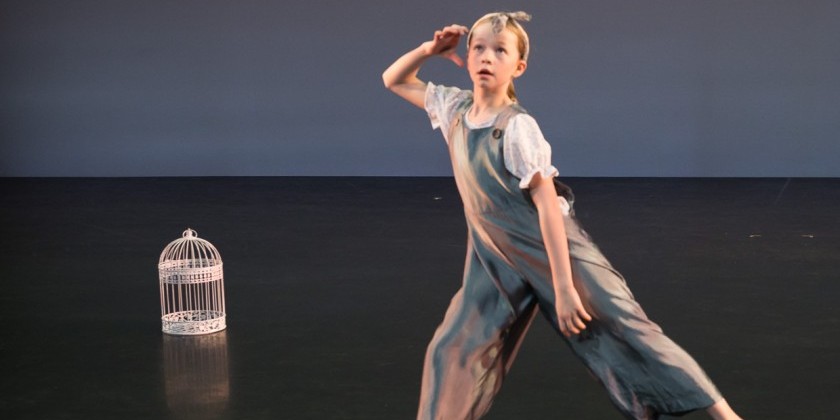IMPRESSIONS: Nadia Beugré's "Quartiers Libres" Revisited at New York Live Arts

Choreographer: Nadia Beugré
Set Designer: Nadia Beugré
Performers: Nadia Beugré, Beyoncé, Kevin Sery
Dramaturgist: Boris Hennion
Costume Designers: Nadia Beugré and Boris Hennion
Lighting Designers: Laurent Bourgeois and Erik Houllier
Light & Stage Manager: Beatriz Kaysel
Sound Landscape Artist: Mathieu Grenier
Executive Producer: Libr’Arts / Virginie Dupray
Dates: October 24 - 26, 2024
Nadia Beugré’s trio Quartiers Libres revisited permeates space with abandon. Meaning “free rein” and originally premiering as a solo in France in 2012, it asks, “Are there spaces where we cannot go? Places that we do not have the right to explore? And if we penetrate them, what would happen, what would we become?”
Beugré, alongside Ivory Coast-based performers Beyoncé and Kevin Sery, invites viewers to engage with Quartiers Libres revisited beyond observation. Beugré, who in an interview with Bill T. Jones admits she has a hard time placing her art in a box and does not specify the work as any one “type of dance or art.” Rather, the performers create an open, exploratory experience which challenges us to ponder each scenario and action.

As we mingle in New York Live Arts' lobby, Beyoncé and Sery charge the space with movement. Viewers immediately clear a circular opening for them to dance. The percussive music, upbeat and hard hitting, urges everyone to move, clap, or cheer. They alternate between dancing with one another and beckoning audience members to join them in improvisation. This party lasts for about ten minutes before the pair splits, opening the two doors leading to the theater. They slither and groove against the doors as we file in with curiosity.
While we can sit in the house, we are encouraged to join the performers on stage, where two large platforms stand. A third platform stands in the house above the seats. We select our new starting places, though we remain free to roam. We scan our eyes, not knowing from where the artists will enter.
Three spherical sculptures constructed of fabric and plastic bottles — each resembling a dandelion — nestle on each platform. A towering curtain of plastic bottles hangs from the ceiling stage left.

Beugré, adorned in a shimmering short sleeved gold dress and shiny black heels, enters from stage right. She holds a microphone, its mammoth cable coiled dozens of times around her neck. Circling the stage and entering the house, she approaches audience members, speaking to them in both French and English: “Bonsoir, madame… Merci… I want to sing to you…”

Her playful demeanor drops when a cacophonous alarm blares. Beyoncé and Sery burst into the space once more, earnestly running in all directions. Beugré gestures for viewers to step away from the larger of the two stage platforms, and she begins a solo seeping with confident sensuality. Her tongue bared, she rolls her hips and sways her body from side to side.

Beugré folds over and slowly peels off her dress to reveal black undergarments. Cradling her ears in her hands, she hums and sighs as she tosses her head between her hands. With great deliberation, she grasps the microphone cable and binds her thighs, torso, and neck in its embrace.
Hunched over and barely able to walk, Beugré slowly traverses the stage. We remain static, save for craning our necks to witness her journey. The contrast between this vulnerability and the dominance she demonstrated just moments before feels stark. She pauses in front of an audience member — motionless, wordless, silently pleading for assistance. The viewer, soon joined by two others and Beyoncé, untangle the cable.
The rest of us erupt in applause as Beugré exclaims, “Merci,” blowing a kiss.

We remain transfixed as Beugré dances along the upstage wall and crawls through the curtain of plastic bottles. Sery, also wearing black undergarments, dances beneath the bottles. Gathering its strands into three sections, Sery hands two clumps to two viewers, keeping hold on the third. “One, two, three!” Sery cries. They release their strands, the bottles colliding and spilling as the curtain falls apart.
Suddenly multiple swooshing sounds redirect our attention. Beugré, Beyoncé, and Sery each hold a black plastic bag which they flap and swoosh open, folding them into slender shapes and rubbing them against their bodies.
In unison, the three hold the plastic up to their mouths, as if preparing to blow into the bags like balloons; instead, to everyone’s surprise, they consume them in a meticulous and conscious act. Beugré traverses the stage once more, baring her face and puffed up cheeks. She holds bold hands high, forming peace signs.

The event concludes as the trio adorns the three spherical sculptures; the black fabric binding the bottles together becomes a costume. They proceed to enter the orbs, moving slowly at first. A bottle falls occasionally, clattering to the floor. As their movements quicken and become more athletic, more and more bottles fall. With a final crash, Beyoncé and Sery collapse on the ground.
They slowly remove the plastic, this final metamorphosis a reflection of their journey. As their transformation resonates, we ask ourselves what spaces we will explore, as uncharted as they may be? What possibilities will we discover?













